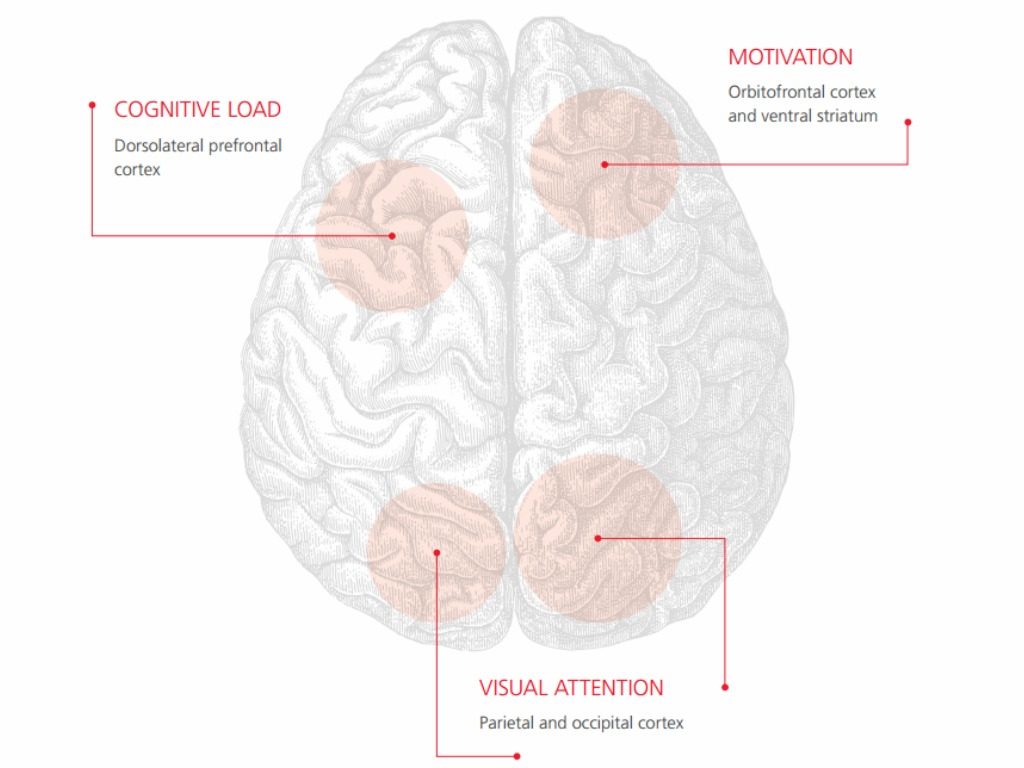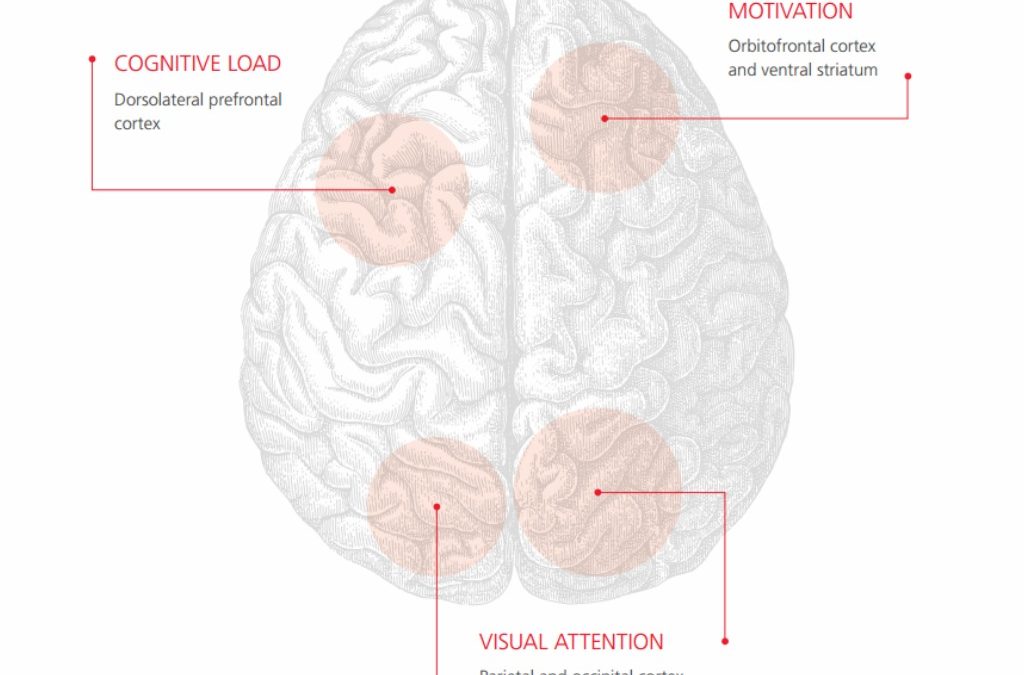
December 12, 2015: Canada Post Corporation is the latest organization to field a neuromarketing study on the effectiveness of direct mail. The study, published on July 31, 2015, sought to verify the hypothesis that “direct mail is more action-oriented than digital media because its physical format stimulates the underlying mental processes that guide consumer behavior.”
What was measured
Using a range of neuromarketing techniques, including brain imaging, eye-tracking, and pre- and post-exposure surveys, the study measured three important mental indicators of media effectiveness: cognitive load, motivation, and visual attention, in brains of subjects exposed to direct mail and digital messages:
- Cognitive Load. “Cognitive load” refers to the mental effort required to understand a marketer’s message, and can be measured by scanning the brain organ known as the Dorsolateral prefontal cortex. Generally, messages requiring a low to medium-level cognitive are more easily encoded in memory than those requiring more processing in this area of the brain.
- Motivation. Obviously, it is not enough that a given marketing message simply be remembered; it must be acted upon. So the researchers measured brain activity in the Orbitofrontal cortex and ventral stratium — two brain areas associated with motivation away or toward an objective.
- Visual Attention. To determine the amount of visual attention paid by subjects when exposed to marketing messages from different channels, eye tracking tools were used. “When coupled with motivation and cognitive load scores, visual attention can indicate how a person feels about a stimulus and how quickly it is absorbed and understood.
Results
The study unequivocally validated its hypothesis that direct mail is — as a channel — superior to digital media. Direct mail’s virtues include:
- Being easier to understand than digital messaging. According to the study, “direct mail requires 21 percent less cognitive effort than digital media, suggesting that it is both easier to understand and more memorable.” In follow-up surveys, messages conveyed via direct mail were recalled better (75 percent) than those conveyed digitally (44 percent).
- More persuasive. Direct mail’s ability to induce those exposed to it to act was significantly better than digital media’s. “Direct mail’s motivation score was 20 percent higher than digital’s score,” reported the study. Interestingly, adding scent and sound both had a strong impact on motivation. “Sensory stimulation is a proven tactic in retail,” reported the study, “a consumer’s likelihood to purchase is in fact correlated with the number of items they touch.”
- More visually efficient. While subjects spent more time viewing digital messages than they did direct mail messages, this wasn’t necessarily a good thing. “When considering its higher cognitive load and lower motivation response than direct mail, this suggests that the extra time spent with digital media is not evidence of enjoyment, but rather the need to better understand the message.”
The study concluded by noting that direct mail “taps into deep-seated neurological processes that trigger action. It also offers the creative versatility to amplify action by appealing to senses beyond touch. It is better suited to close the marketing-sales loop, or the gap between interaction and action.”
A complete copy of Canada Post’s study can be viewed here:
https://www.canadapost.ca/assets/pdf/blogs/CPC_Neuroscience_EN_150717.pdf











![By Photograph: Frank C. Müller, Baden-Baden (Own work) [CC BY-SA 2.5 (http://creativecommons.org/licenses/by-sa/2.5)], via Wikimedia Commons](https://www.diditdm.com/wp-content/uploads/2015/08/opening-an-envelope-150x150.jpg)
![By User:Introvert (Own work) [CC BY-SA 2.5 (http://creativecommons.org/licenses/by-sa/2.5)], via Wikimedia Commons](https://www.diditdm.com/wp-content/uploads/2015/10/1024px-Sparkling-snow.sierra-150x150.jpg)